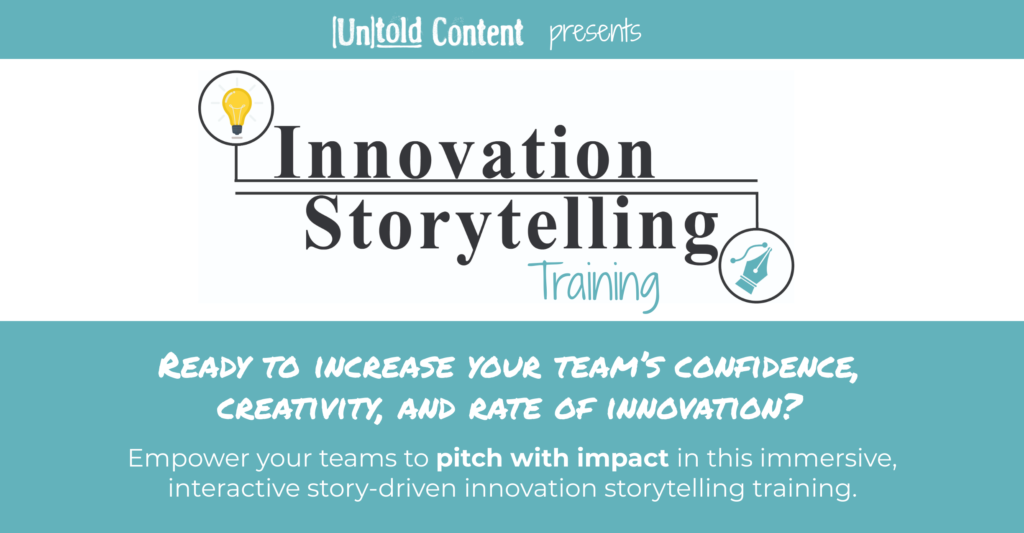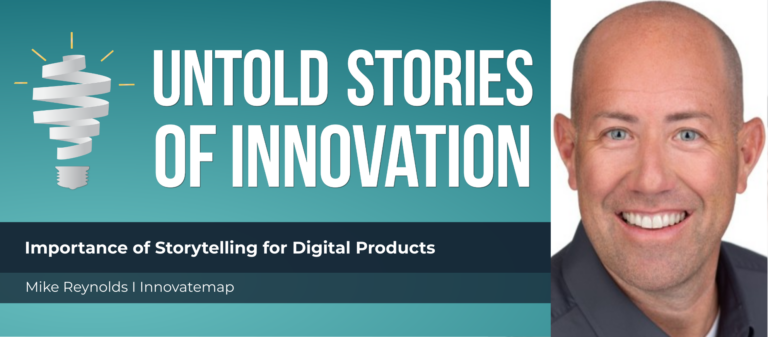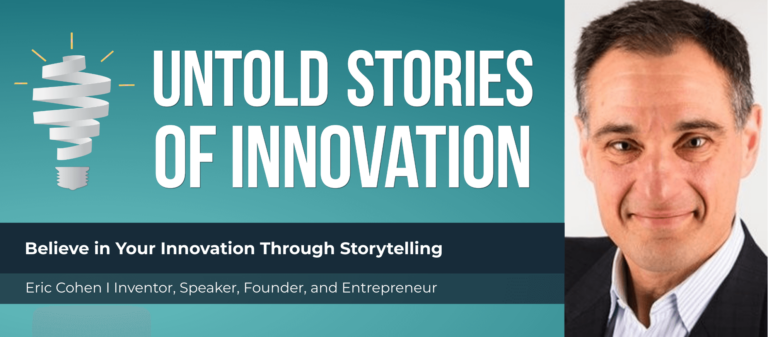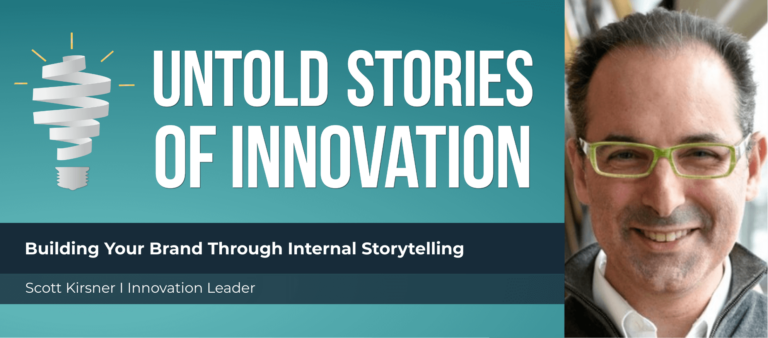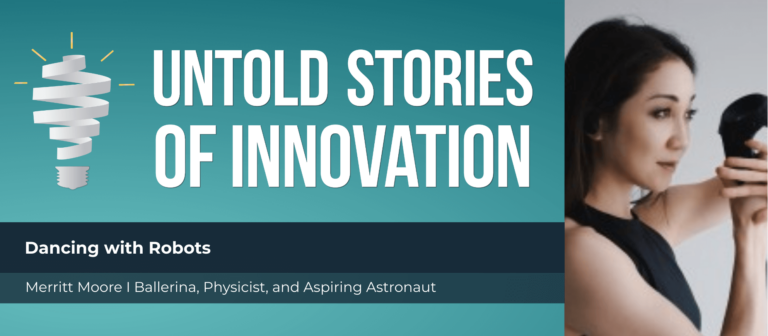Dancing with Robots with Merritt Moore, Ballerina, Physicist, and Aspiring Astronaut
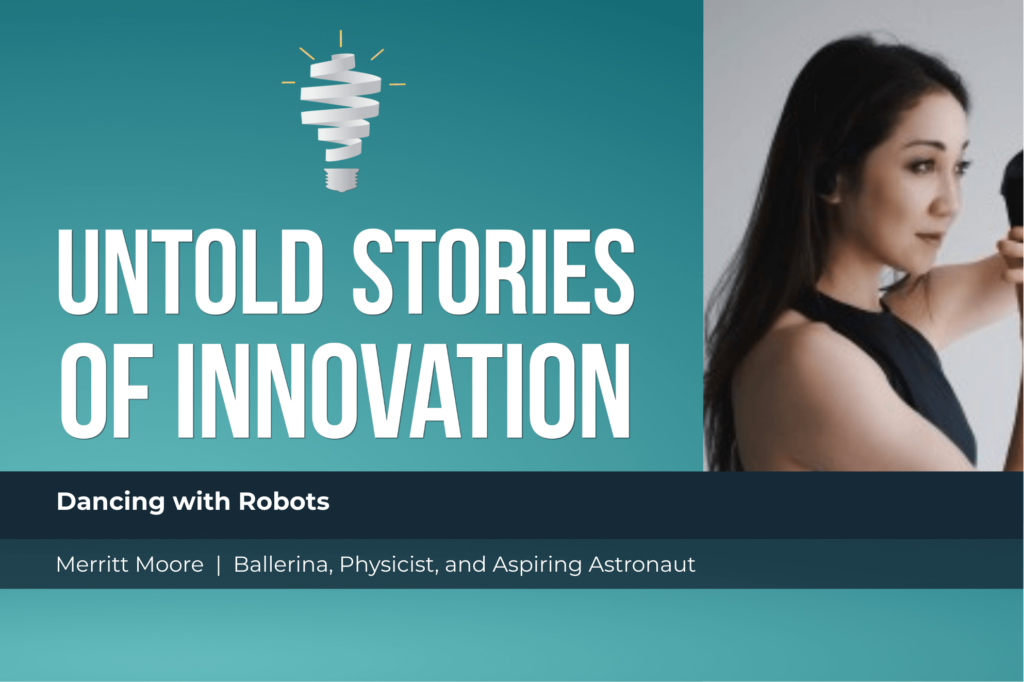
Dancing With Robots - Untold Stories of Innovation
“You can be creative, you can be artistic, you can want to discover, it's not scary. You can do whatever you want. I think by creating it, offering a different image than wanting to be there, it allows people's imagination to then be like, maybe I can have a robot soccer player or if it's dancing with robots to Bruno Mars, then maybe this robot can do other things.” — Merritt Moore
From today’s episode you’ll learn:
Why do stories matter to the innovation process? What values can be instilled in innovators who share stories and are dancing with robots? How do innovation leaders inspire creators to tell and share their success and failure stories?
We speak with Merritt Moore, physicist, ballerina, and aspiring astronaut, to discuss the impact of storytelling in technology and communication. Merritt shares her otherworldly dream of dancing in space, her background in Physics and dance, as well as what became of her one-man plus robot show that she produced during lockdown in London.
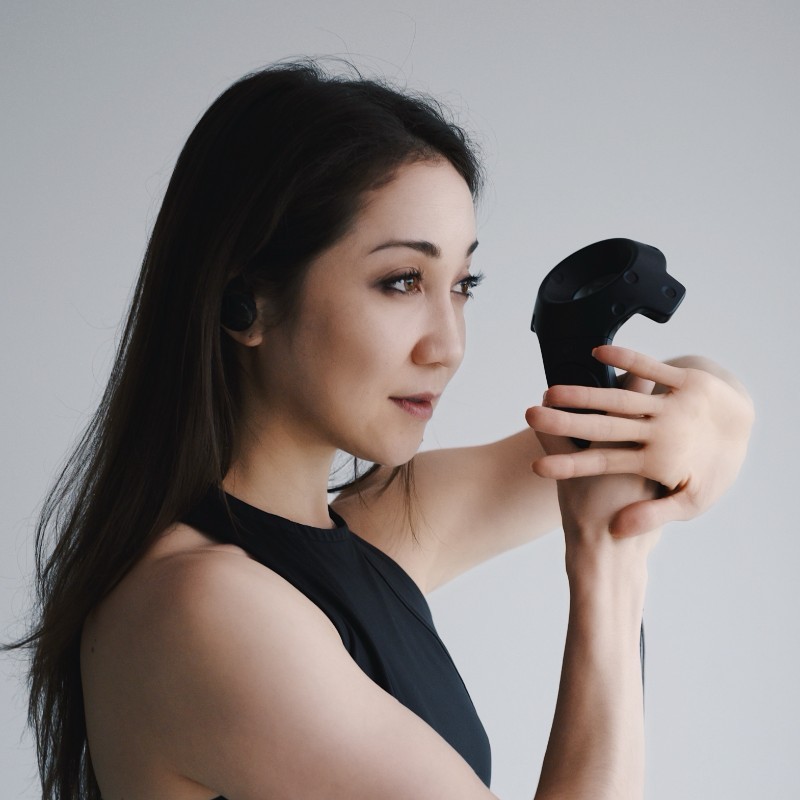
Dr. Merritt Moore graduated with Magna Cum Laude Honors in Physics from Harvard and graduated with a PhD in Atomic and Laser Physics from the University of Oxford. She also pursues a professional ballet career, previously with the Zurich Ballet, Boston Ballet, English National Ballet, and Norwegian National Ballet. She was recently awarded Forbes 30 under 30, and she was one of the 12 selected candidates to undergo rigorous astronaut selection on BBC Two’s "Astronauts: Do you have what it takes?" Merritt urges that the arts and sciences should not be mutually exclusive, and has been invited to be the featured speaker at the Forbes Women's Summit in New York, Princeton Physics Department, panelist for the U.S. Embassy “Women in STEM” Panel in London, and is featured in the bestseller "Good Night Stories for Rebel Girls." Invited as artist-in-residence at Harvard ArtLab, Merritt is creating a duet between a human dancer and industrial robotic arm. She continues to explore the future of A.I./ machine learning, specifically with dance, and welcomes all forms of collaboration fusing dance, physics, and tech.
This episode is powered by Untold Content’s innovation storytelling training. Increase buy in for your best ideas in this immersive and interactive, story-driven experience. Where your teams refine storytelling techniques for their latest projects, prototypes and pitches—and get inspired by 25 epic examples of impactful innovation stories. Learn more at untoldcontent.com/trainings/innovation-storytelling-training
Katie Trauth Taylor [00:00:04] Welcome to Untold Stories of Innovation, where we amplify untold stories of insight, impact and innovation. Powered by Untold Content, I’m your host, Katie Trauth Taylor. Our guest today is Dr. Merritt Moore. She’s known as the quantum ballerina. Dr. Moore graduated with magna cum laude honors in physics from Harvard and then with a Ph.D. in atomic and laser physics from the University of Oxford. At the same time, she was pursuing a professional ballet career with the Zurich Ballet, Boston Ballet, English National Ballet, and Norwegian National Ballet. She’s a Forbes 30 under 30, and she was one of 12 selected candidates to undergo rigorous astronaut selection on the BBC series “Astronauts: Do You Have What It Takes?” So today we are speaking with a physicist, ballerina, and astronaut. I am so grateful to have you on the podcast today.
Merritt Moore [00:01:01] Oh, thank you so much. It’s my pleasure. I’m a wannabe astronaut, so hopefully that will be part of the title.
Katie Trauth Taylor [00:01:11] That’s right. I saw… obviously I already know about your incredible work. I have read Good Night Stories for Rebel Girls to my six year old daughter at night. And we’ve come across your story, which is so impactful and powerful. And of course, then in doing more research you realize that, yes, one of your dreams is to dance in space, right?
Merritt Moore [00:01:34] Yeah. I mean, that was – that is – the ultimate dream. And that is I think after pursuing like, I gravitated towards physics and dance naturally and then after I graduated. Well, actually, right. While I was writing up my thesis, there is this opportunity to apply to be one of the 12 selected candidates to undergo the astronaut selection process with astronaut Chris Hadfield. And I was lucky to be one of those 12. And it just blew my mind away. And I was like, “wow, I hadn’t thought about this.” Like, this is an occupation that, you know, incorporates both high mental and physical strength. So and I’ve always been an adventurer. So since then, I’m like, I want to go dance on the moon. Let’s go.
Katie Trauth Taylor [00:02:30] Yes, absolutely. Yeah. So that only it sounds like that only catalyzed your desire to do that even more.
Merritt Moore [00:02:37] Yeah, for sure.
Katie Trauth Taylor [00:02:40] For those listeners who may have not seen your dance with robots, it is such a moving and meaningful and it just sort of an otherworldly experience to see. And I’d love to know, first of all, if you haven’t if anyone listening hasn’t seen it, certainly you need to go research it and look and just watch how dance between Merritt and robots changes how we view technology. It’s really moving. I’d love to hear if you could kind of take us back in time and kind of tell us about when you first started playing with this concept of scientific communication through dance.
Merritt Moore [00:03:24] Oh, yeah, certainly. And I hope that it’s to expand more to scientific research through dance. So I… my background’s physics and then obviously I have my dance background. And when I was finishing up my PhD, one of them I mean, I’ve been kind of hiding for the past 10 years, like from the dance that I pursued physics and from the physics for the British dance. Like, I just kept them very separate. And after 10 years of having done four years of physics at Harvard, five years at Oxford, plus the four ballet companies, I was like, why not both? Why can’t I merge them? And in pursuing that, I think the questions that I read that led me were intrigued by how technology and scientific research could kind of inspire human creativity and inspire new choreography and inspire a new movement. And so I kind of went down this rabbit hole and I started asking these questions. And it’s so funny how, like, the universe kind of throws things at you. So I was asking these questions while I was dancing at Norwegian National Ballet Performance while making the Bider and a friend of a friend, I found out, like, worked in robotics. And I had to ask I was like, can I come in and hang out with. So I would go like after rehearsals, in between performances, I would go in and just start playing around. And it’s this robot that is like a six jointed industrial arm. Right. So it’s like it doesn’t have like two legs, two arms. Right. It’s just like one weird six jointed thing. Were intrigued by how it moved and how it could inspire me to create a new movement and how I could then incorporate the movement onto the robot and was invited by Harvard Art Lab to be one of their first artists in residence to explore this. And the art lab is an incredible space where they allow artists the space to pursue research without the pressure of a final performance. So I was given the space to research and this was January and February twenty twenty right before covid and then covid hit. I was in London and you know, everyone’s locked down and it was such a devastating time. I mean, I think it’s still quite devastating for the arts and dance in particular. And I think when faced with the challenge, I think instantly well, instantly my brain goes, OK, here, we’re confronted with a challenge. What you know, there’s a silver lining to it. And what is it and what is it? What can I do to push the arts forward? And so. You know, I had to make a number of phone calls to the robot company Universal Robotics, who was wonderful and I was like, you will lend me a robot. And they’re like, not really like, but actually I think you guys do. And so they finally agreed to lend me a robot that was going to be just for two weeks and then it ended up being a month and then it ended up being a couple months. And now it’s a continuation in a really, really wonderful collaboration. And yeah, I’ve been having just such a great time pursuing that.
Katie Trauth Taylor [00:07:16] Can you take us into the science and the tech of how you approached choreography? And was that you coding the robot’s movements? Were you partnering with other technologists who were supporting that? And what was that collaborative process like?
Merritt Moore [00:07:32] Yeah, so during lockdown, it was definitely a one man show while I was a one man plus robot show. And so I would have to program the choreography with various, what they call them, waypoints. So you set the points that you want the robot to move and then you have this at the speed and you have this set like how you want it to curve. And then the hard part is like making it fit the music and then. So I’m I’m they’re programing it and then I’ve got my iPhone and hitting play on the music, play on the video recorder, play on the robotic, play on my cell, just like tripping over wires and editing. So all of that was definitely yeah. It was just me. Like there is sometimes bouncing. There wouldn’t be. I was just really fortunate that there was this deserted theater in London and they let me hang out there during this lockdown. But like there were times when it was too dark. And so I’d be carrying this 20 foot ladder to, like, put the light bulb up on the thing. Like, I literally was like, you know, what we do for the arts man.
Katie Trauth Taylor [00:08:56] Do you think how would that process have been different? Were we in non-covid times?
Merritt Moore [00:09:04] I don’t know if I would have explored it the way that I did. And I think what covid forced us to do is to re-question and reanalyze and redo everything. And so I would have been super busy with all the other gigs that I had lined up, and I don’t think I would have had months to call up robot companies to beg them for robots and nor the time and space to spend because it would take me hours like so when I first got it, you know, I would spend morning to midnight every day working on it and it and it becomes easier as it goes on. But in the beginning it was like, I don’t know, like how on earth am I going to make a six jointed thing look like or like resemble the movements of a two legged warm human, right? Like, it’s just… so I found it super interesting and like various questions that came to mind was, you know, research shows that 90 percent of communication is nonverbal, predominantly body language. And so I was kind of like, does body language necessarily have to come in human form? Can it also come in this weird robotic form? And a really interesting time also in pushing the arts, pushing dance. And also it’s a wonderful opportunity to work with the best minds in robotic research around the world. So, one is like Jose Luis Garcia [del Castillo Lopez], who is at Harvard, was helping me like make it interactive when I was at the art lab, we’ve got like great collaborators in India, just like now, been working with another company robotic, who just sent me, like, they were like a little hand thing in it, what they call like a force copilots. So it can remember movement better. So I’m loving this as an opportunity to investigate research more while enhancing the art form. And so, yes, because I think often there’s a belief that science and art should come together. But I think a somewhat disappointing outcome is that it normally just tends to be art, helping science communicate. It turns to be science communication in an art form. But I think the standard of both tends to drop so that the standard of science tends to drop and standard of art tends to drop when they are together. And I’ve been super passionate about it. Pursuing these with excellence, hence I had pursued them separately, but now as I merge them together, I want to make sure that they’re enhancing each other and improving each other, not we’re not dumbing down in order to be together. So it’s like, how can my being like I really want this robot to be moving around the floor. Who do I talk to? What roboticist I talk to? How do we, like, collaborate if it doesn’t exist, how do we create it? And also on the art side, like, oh, like with this new technology, can we create these emotions in this way? Yeah. So I’m just really enjoying it. It feels natural in the way that these are coming together.
Katie Trauth Taylor [00:12:45] Definitely, I think that story of collaboration is it’s really unreal and that image of you so so certainly the collaborative part of it, but also just that there’s so much beauty and that image of you in the theater working hour after hour alone with the technology, trying to uncover it and for them for the research purposes that you had. I think a lot of quarantine times have called our creativity into question. And it’s been a major challenge, I think, for almost everyone to dream up new worlds when we’re so confined. You did. It’s such a beautiful example of that. I just wanted to reflect on that first, and then I want to dig more into this idea of art as a form of scientific communication versus both elevating the other. So many of the people who we work with that I’m told, are coders and technologists and inventors and innovators trying to build new technologies and ideally building those technologies in a way that’s deeply empathetic with the people who ultimately will benefit or use those technologies. But oftentimes they sort of fall into typical or standardized ways of communicating those innovations and focusing on the features or the very detailed, fact filled science behind it. Really important, but something that we try to do. What I’m told is like research story frameworks. ARC’s patterns map them into innovation contexts in order to try to more deeply understand how we can push innovation storytelling beyond some of those sort of standard or default approaches. So, yeah, anyway, I’d love to hear your perspective on that. And then I have a question, of course, about the story in the choreography work that you do. But that’s maybe as a follow on question.
Merritt Moore [00:14:56] Yeah, well, I think I mean, case in point with now, working with Universal Robotics and the various robot companies that I’m now working with. And I think initially there was a hesitation, understandably, you know, there’s like this random girl keep calling them up. But like what they’re like people aren’t going to be buying a robot to dance with. Right. But what so I think in their heads they’re like, why? I don’t know why this is going to be beneficial for the company to have these dance robot dances with you. What is this? But I think what they found when I started publishing the videos was the excitement that came around it being the viral nature. So like certain videos get like 14 million views in a couple of days and, you know, something that they would never get with. Showing the robot lifting a cup, right? Yeah, yeah, and and their mission in their motto is continuing its human machine interaction, human machine collaboration. But I think there’s a lot of fear towards machine robots. But now I think when men and women see, you know, me dancing right next to it, they’re like, oh, actually this is like dancing with this robot, like, how scary can they be? So, like, it’s like subliminally kind of like forwarding messages and I mean, talking about subliminal messages. But for me, a lot of my motivation behind this as well is just creating a different image of what it is to be a scientist. Right. It doesn’t mean you have to be sitting in a corner regurgitating facts from a book. You can be creative, you can be artistic, you can want to discover talk like it’s not scary. You can be feminine, you can not be feminine. You can do whatever you want. But just trying to… I think by creating it, offering a different image than what’s there, it allows people’s imagination to then be like, oh, OK, you know, maybe I can have a robot soccer player or like, you know, if it’s dancing to Bruno Mars, then maybe he can do other things.
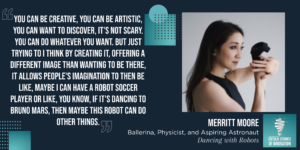
Katie Trauth Taylor [00:17:32] Yeah, it’s really both. It’s the work that you’re doing, transforming what it means to be a physicist and a scientist. And conversely, the work that you’re having the robot do changes our perception of what’s possible or what robots are for or how they’re supposed to exist in the world. And therefore our perception of them, which may open up whole new areas for different applications and medicine or education or who knows that maybe wouldn’t have even occurred to us had we not seen this softer, more collaborative side of the technology. And like you said, the sense of fear that we often have around AI and robotics and the fear of replacing the human, I just think when you watch the movements that you’re able to achieve with these robots, it tells such a deeper and such a different story. It’s really, really deeply powerful. It’s not surprising how viral it’s been.
Merritt Moore [00:18:33] I think you and that’s really interesting what you just said of. That fear of replacing because I was like I was just popped in my head, now I’m like you I should do is also show a video of just the robot on its own, because then it’s not… it’s… it doesn’t work. You know, when the robot’s just on its own, you really kind of need both. And the robot there for that image, too, to be as powerful as it is.
Katie Trauth Taylor [00:19:04] So, yeah, you know, I think there’s an emotional response or a catharsis that happens when you’re watching. There is. And I’ll link it in the show notes too. But there’s research out of Harvard Medical School a few years ago that dances and movement activate our emotional intelligence. Yeah. And that just this brings that to bear and such a different way.
Merritt Moore [00:19:31] Super cool. Yeah, I’d love to read that.
Katie Trauth Taylor [00:19:34] So, OK, let’s dive into this idea of story because I’m fascinated by the kind of storytelling that you do, again, as a physicist and as a ballerina. So are there certain… would you say… when you’re approaching choreographies, is there a certain story or story intent or story arc or story line that you come in with? How does that change over time? And so, yeah, if you could just kind of speak to, I don’t know, if you sort of approach your work as a choreographer around story or not…
Merritt Moore [00:20:10] I would say it’s all new to me. So I think my main intention when I was working with the robots was I think the best outcome is when you give yourself the freedom to play. So I’ve just been at first going in with the feeling of, “OK, let’s just play and have fun and let’s see where this goes.” In terms of story I have I’ve not actually done a full length or longer dance of a story, and so I’m super intrigued by this as well. Like, I have now been meeting up with a friend who’s really into poetry and reading more about storytelling, because that’s not my world at all. I’ve gravitated towards these very non-verbal, mute activities that don’t really have, like, that storyline arc. So it’s been interesting. Yeah, it’s definitely part of my growth. And I love how this research in this work is forcing me to explore other fields like that.
Katie Trauth Taylor [00:21:31] You know, actually, this reminds me, I think perhaps the best way, from my perspective as a storytelling researcher, I think what you’ve done so far with robotics and dance is sort of what we call staging. You’re setting up the context that helps us all get behind and understand what’s possible and sort of the lay of the land here. And you’re right, it is sort of setting you up perhaps for the now making longer pieces or involving plot in new ways. But yeah, like right now we’re sort of in that beginning part of staging this. And I think there’s still story behind it, but maybe not in the beginning, middle and end, kind of traditional way of doing story,
Merritt Moore [00:22:13] You know, but if you want to talk more about this at some point or like anyone in the audience, I think I have been asked to create a longer version of this very like five minute long, 20 minute long, 30 minute long. And that’s currently on my list of projects. And I find it quite daunting. So I am very eager.
Katie Trauth Taylor [00:22:45] I would love to brainstorm, obviously, the idea that would be a dream to me and my to do it. So yeah, definitely. Yeah. There’s another there’s just right off the top of my head to a really fun story framework. This is just one of a million. OK, but it’s fun to play with. It’s called an arc of narrative and it’s a text analyzer. Well, first it’s a theory. So it sort of looks at a story from the perspective of how much time and at what moment in the sequence of the story are we staging versus progressing the plot versus other functions. And so and then it takes every popular film or not even just pretty much any film you can look and see. At what point in the film is it doing those different narrative arcs and then you can even put in your own texts. And granted, it’s usually a written form. So I’m not sure, you know, how it doesn’t really necessarily work with non-verbal. But yeah, it kind of shows these patterns and it traces of an X Y axis and it’s interesting. So you can check that out to kind of start. Thinking about that idea, but that’s only one story framework of a bunch, we’re collecting so many right now and we’re trying to map them to different moments in the innovation process, which takes me. Oh, yeah. Go ahead. Sorry.
Merritt Moore [00:24:11] I was going to say as well, especially if it was on the x y axis, we like grass and we like.
Katie Trauth Taylor [00:24:17] Yeah, exactly. Yeah. Yeah. And that takes me back. Like, can we dig a little bit deeper into that moment where you’re trying to work with robotics companies and maybe the ones who didn’t immediately get it? Could you take us a little bit deeper into that moment? How did you have to change your pitch to help them see it? Or was it just one of those things where they had to see the video in order to and to see its impact on society when it clicked? Or was there another way that you were able to frame it to help them understand the potential value?
Merritt Moore [00:24:53] Well, I think in the beginning I was just incredibly stubborn. And I think I messaged everyone on LinkedIn connected with the company was like, “Hey, hi, hi. It’s me again.”
Katie Trauth Taylor [00:25:08] Yeah, there is so much power in that, though, this podcast and the fact that you’re on it is a testament to us doing that and not being afraid to ask when you believe in something and you really need to do it and understand it.
Merritt Moore [00:25:22] So I think you have to really believe it. And I just really meant it was what I wanted to do was like, we are in a lockdown. I want to work with this robot. I think I understand this. No one’s able to dance, but I think I can do it like whatever it takes, I’m going to make this happen. And so I think but, you know, at first the loan was just two weeks and once the… But it started coming out then I think they were a lot more on board and I totally understand the hesitation in the beginning because I think it’s hard to describe something that’s in one’s head. And I didn’t even know what I was going to be doing, so it’s just been. Yeah, it’s been a journey, and what’s fun is it’s continuing like the artistic side is, is opening up so many doors on the artistic side and on the technological side, it’s actually kind of hard to keep up. But, yeah, it’s been lots of fun.
Katie Trauth Taylor [00:26:32] It’s really neat. Could you give us some hints into future research, questions that you’re going to be pursuing or court or performances or… Yeah, you could kind of let us know what you think the future might hold.
Merritt Moore [00:26:45] Yeah, well, I’m definitely intrigued by having it more interactive. So at the moment. So when I was first working at the Harvard our lab, we were using these VR handsets, just the handset stuff that had a headpiece too. I have to pinpoint a location where I want the robot to go, so it’s a lot more interactive and I’m working with the robot as I’m moving. So definitely in terms of research, like wanting to experiment with that, more of the real time interactive during lockdown, it is difficult because in order to implement that, you need a lot of sensors and you need a lot of. Equipment and tech backup. So I just did these dances that are choreographed and it’s not in real time, but exploring that like there’s also, um, putting the robot in another robot that moves around the floor or working with gestures and motion capture and ideally at some point, like with A.I.. So when I was in Norway, I got suited up in the motion capture suit and would dance. And that data would be stored to be fed into a machine learning algorithm that would then choreograph new movement. And so working on mapping that onto the robot and. Amazing. So that would. Yeah, but I mean, these ongoing research stuff, it takes a while.
Katie Trauth Taylor [00:28:27] Oh, I’m sure it sounds incredibly complicated. It sounds simple as you explain it, but I’m sure the execution is incredibly complicated. Yeah. How fun. Just there’s so much about this too. That makes me think of all of the people who are working in robotics or in other forms of innovation that are sitting at the lab bench and just playing and experimenting and how the movements that you’re kind of calling forth are bringing their work to light in so many ways. It’s just this other in my mind, too, it’s the beauty of sort of bringing the experimental and the try and try again and the failures that come with, uh, with having to be playful as we work to make technologies better. It’s representing that in so many ways to
Merritt Moore [00:29:20] You know, I definitely believe in play and experimenting for sure.
Katie Trauth Taylor [00:29:27] One of my favorite lines to Merritt, and I believe it was in your London Vogue piece when they interviewed you, was that you have little girls writing to you and sending you pictures of them with their science goggles and lab coats in a tutu. And so it’s amazing. So, yeah, well, I think I’d love to end because I know you have a lot of work to do. But could you share with us as we wrap up some advice that you have for young girls and how they see themselves and what their lives might be?
Merritt Moore [00:30:04] Oh, yeah. The advice I would give is one in particular is like, give yourself time. I think there’s so much pressure right now for immediately brilliant and, you know, achieving incredible success in a day. And or if you’re not really it right away, then maybe that’s not for you and you should be doing something else. And I think there’s well, for myself, like I said, I’m one where I enter a room where you give me an activity. I’m definitely not brilliant the first time I try, nor the second or the third or the fourth or the fifth. Right. I like that I’ve got a very slow plateau in the beginning and then somehow it all accumulates and then I get it and I understand. But that’s after months, years of kind of just being happy, being in the room and plodding along and knowing that every hour of work they put in will pay off in the end. And just not always, as I expected. But it will pay off. And it might be like a year from now. It might be five years from now. So I think so. I think one of the big things is to give yourself time and also. I mean, your time is precious, like also value your time so you realize when you are. Have, you know, 20 minutes, if it’s your turn to going to the phone or is it going to make you better yourself by going to a book or even just daydreaming out of the car, I think it is incredibly helpful because that’s when. Yeah. So it’s like giving yourself the space and the time. Yeah. Yeah.
Katie Trauth Taylor [00:31:55] But yeah. I mean again, it’s a beautiful image as you’re saying, that I see you in that theater and for all the sadness and all the challenges that covid has brought there, there was this time that many of us were granted to sort of carve out a new world. And you did. And I’m so grateful that you did. I know the world is grateful and I’m so thankful that you came on the podcast. What a wonderful way to spend some time together. And I’m looking forward to sharing this with my six year old and also with the larger innovation community, for sure. Thank you so much. What a wonderful time. And please tell your [unclear wording] I say hi.
Katie Trauth Taylor [00:32:37] I will. I will. Where can our listeners find you?
Merritt Moore [00:32:41] Oh, I’m on Instagram, Twitter and website physics on point and then website is physics on pointe dot com with an E at the end and LinkedIn Merritt Moore. Yeah, that’s me.
Katie Trauth Taylor [00:32:59] We’ll link to all of that in the show notes and I’ll talk to you really soon.
Merritt Moore [00:33:03] Yeah. Take care.
Katie Trauth Taylor [00:33:07] Thanks for listening to this week’s episode. Be sure to follow us on social media and add your voice to the conversation. You can find us at Untold Content.

